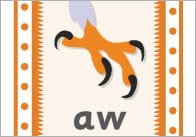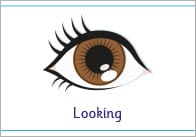Colour recognition: Sometimes a beige wall is a better wall
The world is full of colour so it is little wonder that we are all keen to get children recognising and naming their colours as soon as possible. Like everything else, some children pick up colour recognition much quicker than others. Some will start Nursery knowing lots and others will still not recognise any when they start Reception. The fact of the matter is that learning sticks in children’s brains when it is relevant and meaningful to them. Information that is not interesting or necessary literally goes in one ear and out of the other.
Bearing this in mind we need to think carefully how we teach children anything and how the environment that we create evokes a sense of excitement, awe and interest. When it came to teaching colour when I was first a Reception teacher, we had the joy of the ‘colour table’. A table festooned with items all in this week’s colour. You were not allowed to touch them or play with them, just look at them and hopefully absorb into your brain the redness of red or the yellowness of yellow!
Problem was, on my carpet I had a good handful of children who came to school knowing all of their colours (usually girls!). How BORING it must have been for them to sit and listen to me waffling on about yet another red fire engine or green bucket. What a waste of learning time for them all I was doing was reinforcing their notion that sometimes when you sat on the carpet and listened – it was dull.
Then I had the children who knew few or no colours (usually boys!). How engaged do you think they would be listening to me listing items on a table. I was like Bruce Forsythe on acid. At least if the Generation Game contestants could remember everything on the conveyer belt they got a prize. All these children had to do was remember that everything was red – and they couldn’t even do that! Mind you that wasn’t their fault. It was mine for making them sit through such a mind numbing activity!
These days the colour table seems to have been replaced by some computer generated splodges that you can cut out, laminate and stick onto your wall. Who are these splats and splodges for? The children who know their colours know them and the ones that don’t are no more going to be inspired to learn them from a laminated splay than they were from a pile of inanimate objects. So why have it up?
Make your display interesting and engaging
If you really want to teach colour recognition in record time and be sure that it is going to stick in their brain then you can do it in 3 simple steps.
1) Make it about them
2) Make it exciting
3) Use their work as display to remind them.
Assess your children when they come to you. If they already know their colours then you are not going to make them learn them again with those who don’t. Make a colour chart WITH THE CHILDREN one colour at a time targeting the ones who don’t know NOT the ones who do.
Tea bag missiles
Take the colour red for example. Rather than a red table or a laminated blob…get some used tea bags. Dip them in a pot of watery red paint in a variety of shades. All of the time talking to the children about ‘red’. Put a large piece of paper on the wall or the floor and then, using a spoon, flick/fire/catapult your red tea bag missiles into the air and watch them splat in an explosion of giddy redness. Take photographs of the children having a great time during the activity.
Take their red ‘tea bag splat art’ and put it on the wall. Very importantly, next to the art put lots of pictures of the children creating it. (Children are VERY ego driven and like nothing better than to see themselves in a display. They are also more interested in themselves and their friends than anything else. They will keep looking at, talking about and referencing a display that they have a) made and are b) featured in).Lots of labelling on the display using the word ‘red’ should just about do it.
Fish Painting
When you move onto green, then you only target the children who don’t know green. Get a large fresh fish (dead of course)! Paint it in shades of green ready mix paint. Cover it in sugar paper (absorbs the paint really well). Rub gently and then peel back to reveal your perfect green fish print. As before stick it on the wall with LOTS of photographs and a mix of styles of print. How much more engaging would that be than those laminated splats you have up?
Of course it is not fair that the children who know their colours are penalised for this fact so that they have to miss out on fish printing or tea bag splatting just because they have already picked up that knowledge. So, when you are red tea bag flinging and someone who knows red already asks if they can have a go. Of course they can only where they are concerned you are no longer splatting in red you are splatting in scarlet or ruby.Your fish scales aren’t green they are mint, jade, leaf or celery!
And on your amazing display alongside your photographs of children learning to name the colour red and the colour green you also have photographs of children with speech bubbles who are saying ‘this colour could also be called scarlet’ or ‘this shade of green is called jade’.
Suddenly it ceases to be a quick ‘make do’ display that fills a space and turns into a learning wall that shows how you are using assessment to tell you what and who you need to teach and engagement to ensure that your teaching will have impact – not to mention differentiation and inclusion!A computer generated laminated splat? How could you?! Save them for your enhancements and reinforcements NOT your main teaching tool.
Alistair is an experienced early years consultant and former head teacher of an Infant School and Early Years Unit. For more useful hints and tips to engage, motivate and inspire children please visit his blog: abcdoes.
Popular Teaching Resources
Stay Up To Date
Sign up for our newsletter and we’ll let you know when we create new early years resources.






